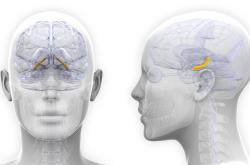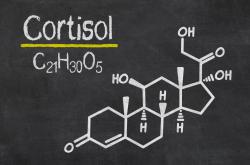Chronic Midbrain Overactivation and the Stress Response
The midbrain is part of the brain that is involved in our stress response. Find out how midbrain becomes over-stimulated and what you can do about it.
Any study of the brain’s role in the stress response must, at one point or another, turn to the subject of the mesencephalic midbrain. This area of the brain plays a critical role in some of the most important aspects of normal stress response, and when its natural processes are in any way disrupted, the results can be catastrophic. That is why, it is important to understand the mesencephalic midbrain, the effects of overactivation of this part of the brain, and how to deal with that problem.
The Mesencephalic Midbrain
The mesencephalic midbrain is a section of the brainstem located above the hypothalamus and directly under the cerebral cortex. From this central location, it is able to fulfill a variety of roles that can affect the human body’s response to stress.
The Midbrain’s Role
The midbrain is responsible for a number of critical systems. It controls eye movement, and impacts both the auditory and visual systems within the human body. It is also the area of the brain responsible for generating epinephrine, adrenaline, and norepinephrine for the entire nervous system. Of even more relevance to fatigue patients is the fact that this area of the brain exercises dominion over the magnitude of any adrenal response to stress.
Midbrain Impact on the Stress Response
When the brain detects a stressor, it is this area of the organ that determines exactly how powerful the stress response will be. By design, this process usually involves a short-term reaction that helps to provide guidance to the adrenals. As the midbrain determines the severity of the danger and the necessary response, that information is used by the adrenals to ensure that the stress response remains proportionate to the actual perceived threat.
Vulnerabilities of the Midbrain Stress System
Still, the midbrain is not immune to damage, and any assault on its integrity can disrupt this carefully designed system. In fact, it is particularly susceptible to inflammation. When this occurs, the reticular activating system can become over-stimulated, leading to increased anxiety.
Overactivation of the Midbrain
When overactivation of the midbrain takes place, it can have a number of negative effects on the body. To better understand the issue, it is important to discover how overactivation begins, so that patients can remain vigilant to potential issues that might affect this area of the brain.
How Midbrain Becomes Overly Activated
Overactivation of the midbrain occurs when the reticular activating system becomes overly stimulated for extended periods of time – usually as a result of lingering inflammation. This results in an increased rate of norepinephrine in the brain, which can cause chronic anxiety over time. This, in turn, leads to an inability to properly determine the appropriate magnitude of any stress response, which results in the adrenals releasing more cortisol than is necessary for the situation. Over time, this can damage the brain cells, leading to an even more unbalanced stress response to future events.
Dealing with Midbrain Overactivation
Given the dangerous health consequences associated with midbrain overactivation, dealing with the issue has to be a primary concern for fatigued patients. Fortunately, there are a number of treatment options that have proven effective in dealing with this issue.
L-theanine
Gamma-aminobutyric acid (GABA) deficiencies in this area of the brain can lead to serotonin levels that are too low to prevent dysregulation. L-theanine is one solution to that problem. Along with B6 vitamin, it can help to reduce the midbrain’s demand for serotonin and calm its stress response.
Controlled Diaphragm Breathing
As odd as it might sound to some, there is no getting around the fact that your body needs some level of carbon dioxide to properly distribute oxygen throughout your body. The type of breathing experienced by panicked and stressed individuals actually reduces oxygen levels, while also dramatically reducing carbon dioxide levels as well.
A simple Strategy for Controlled Diaphragm Breathing
Breathing through your diaphragm can help to minimize this loss when you are under duress. All that is required is to breathe in through the nasal passages, as deeply as possible. Then exhale after a brief pause, being sure to release the breath slowly. Repeat the process several times, and it will help to restore some semblance of calm and reduce the stress response’s severity.
In addition, new technologies that provide neurofeedback training are also showing great promise in helping to restore proper function in people suffering from chronic midbrain overactivation. The important thing to remember when these issues arise is that treatment is available to help restore the brain to its normal state. The key is to act as early as possible, and focus on the things you can do to change the situation for the better.
You might also be interested in:
- The ‘Insulted Midbrain’ in Chronic Fatigue Syndrome. http://www.cortjohnson.org/blog/2014/08/22/insulted-midbrain-chronic-fatigue-syndrome-glial-cells/
- The #1 Fibromyalgia Myth—Is It True? http://betterbodysolutions.blogspot.com/2010/08/1-fibromyalgia-mythis-it-true.html
- Brain Based Therapy Missouri. http://www.doctorschierling.com/blog/brain-based-therapy-missouri
- Chronic Fatigue & CFIDS. http://brainbasedcare.com/chronic-fatigue-cfids
- The Midbrain. http://psychology.about.com/od/biopsychology/ss/brainstructure_4.htm#step-heading


















Leave a comment